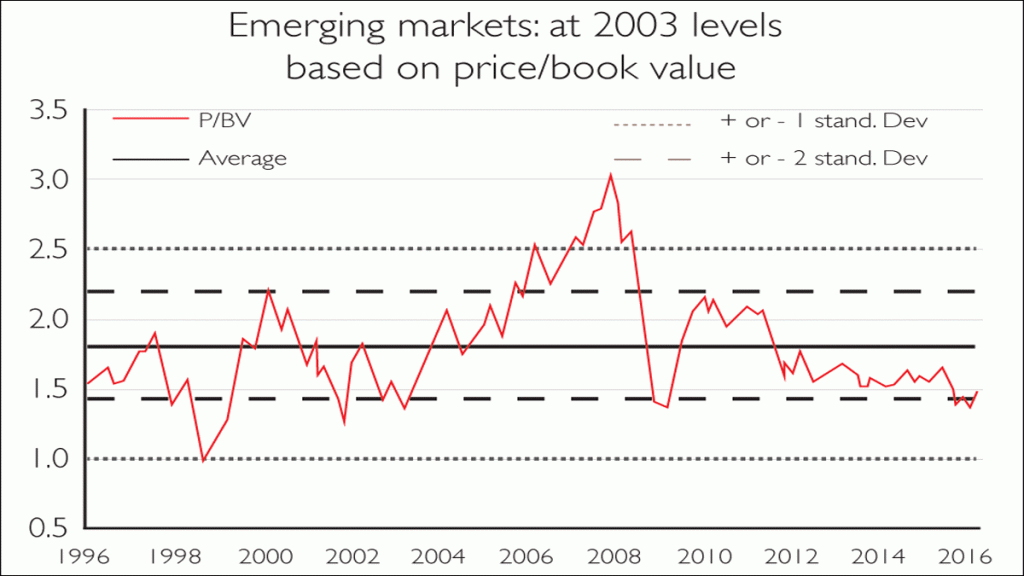
I’ve long thought that emerging-market stocks represent decent long-term value. But they also face strong headwinds – a stronger US dollar, higher US interest rates and lower commodity prices among them. So my core view has been to play emerging markets defensively, using infrastructure funds, or low-volatility exchange-traded funds (ETFs).
Yet just a few months into the New Year, and everything seems to have changed. Many big hedge funds now reckon the US dollar might weaken rather than strengthen and that US rates might not rise very much at all. Commodity prices have stabilised and even rallied sharply.
As a result, emerging-market assets including equities, bonds and local currencies have rebounded. According to Bloomberg, one index of 20 emerging-market currencies has just put in its best performance in 18 years, while the MSCI emerging-market benchmark index has had a cracking start to 2016. It rose 9.31% in the first three months of the year – a big turnaround from 2015 when it fell 15%, having fallen in the three previous years too (in 2012 it slid 18%).
Amid the excitement, the big US emerging-market tracker fund from iShares pulled in $4.6bn last month, according to ETF.com, much more than the other big ETF of the moment, the SPDR Gold fund. The chief beneficiaries have been Brazil, Turkey, Russia and South Africa. And in valuation terms – at first glance at least – emerging-market equities look reasonable value. The chart above comes from pan-European asset manager Amundi.
At the current price-to-book-value ratio of 1.42, emerging markets are where they were in March 2009, and March 2003. It’s been lower – September 1998 (0.92) and October 2001 (1.24) – but it’s not expensive by any means. Return on equity has fallen from a peak of 17% in 2008 to 10% – relative to developed markets, says Amundi, it is “just below its ten-year average… and about twice as high as in September 1998”.
However, what happens next depends on a very obvious metric – emerging-market corporate earnings. While most analysts now expect an end to the four-year earnings drought, I can’t see how the tailwinds now benefitting emerging-market companies will help them much until 2017 at the very earliest. Many developing-world businesses have been to hell and back in the last year.
Sales have dropped, local consumers suffered, debt servicing costs shot up – surely this will all mean a very ugly 2016 and maybe even 2017? JPMorgan analysts reckon that instead of 7% earnings growth we could see a 7% decline in profits. That would put emerging-market stocks on a forward price/earnings multiple of close to 14.5 – hardly a bargain.
Amundi does point out that, for the current impressive tactical bounce to be maintained, we need to see some hard evidence of a much bigger cyclical swing. For that to happen, four conditions must be met: “China’s economy will have to continue to stabilise, given its influence over other emerging economies; oil and industrial commodities will also have to continue to rally; the (Chinese) renminbi will have to remain stable; and the US dollar must not rise too much, even when the Federal Reserve raises interest rates. If these conditions are met, emerging markets could well be the positive surprise of 2016.”
I think there’s a fair chance all four of these conditions might be met in the second half of the year, but for now I’d be more cautious. If you have invested in emerging-market equities more opportunistically (ie, with an eye on short-term gains), I’d be tempted to take some profits now. If you’re a long-term investor, stick with them, but invest via more defensive funds such as the Utilico Emerging Markets Infrastructure investment trust (LSE: UEM), or one of the many low/minimum volatility trackers following the MSCI EM index.